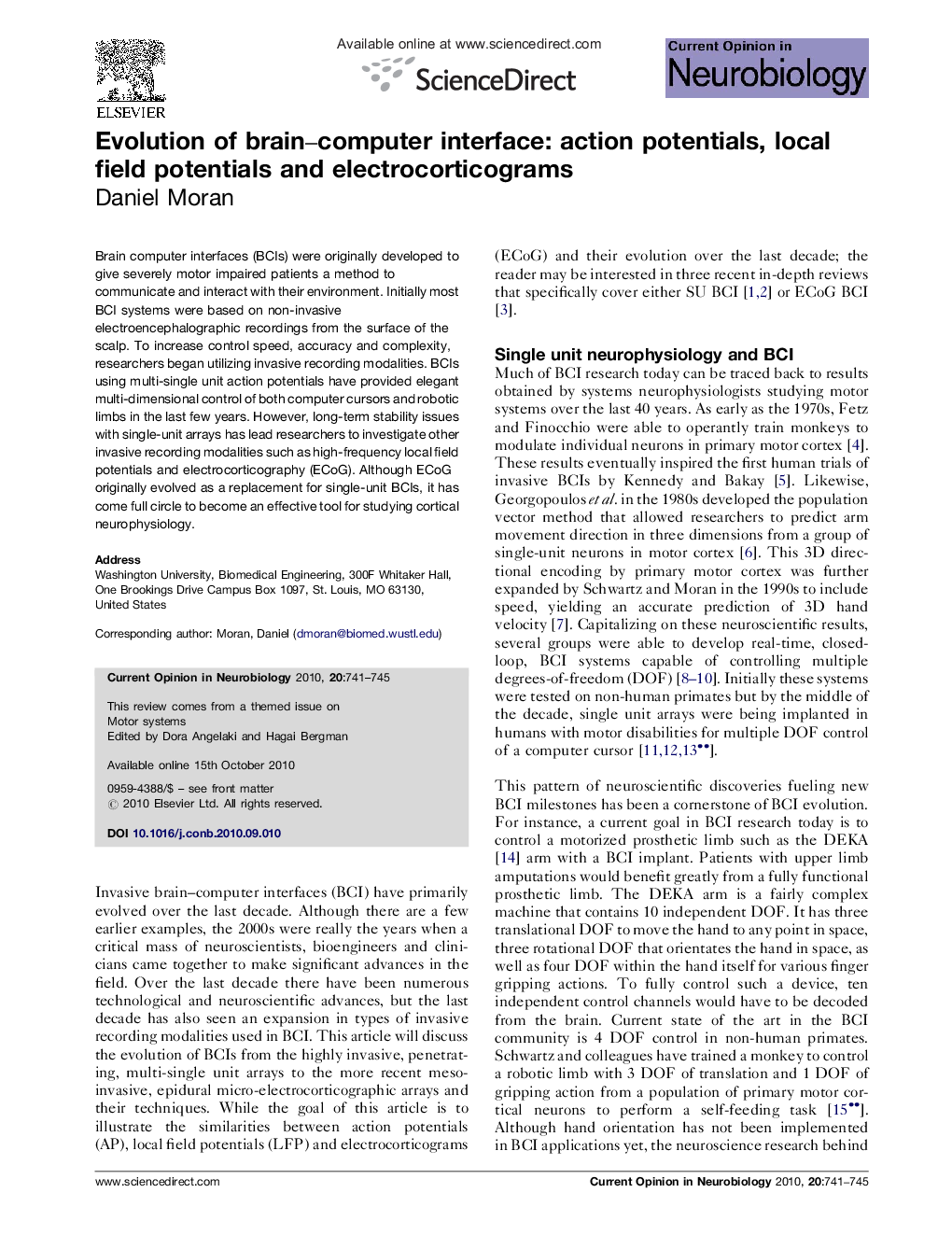| Article ID | Journal | Published Year | Pages | File Type |
|---|---|---|---|---|
| 4334578 | Current Opinion in Neurobiology | 2010 | 5 Pages |
Brain computer interfaces (BCIs) were originally developed to give severely motor impaired patients a method to communicate and interact with their environment. Initially most BCI systems were based on non-invasive electroencephalographic recordings from the surface of the scalp. To increase control speed, accuracy and complexity, researchers began utilizing invasive recording modalities. BCIs using multi-single unit action potentials have provided elegant multi-dimensional control of both computer cursors and robotic limbs in the last few years. However, long-term stability issues with single-unit arrays has lead researchers to investigate other invasive recording modalities such as high-frequency local field potentials and electrocorticography (ECoG). Although ECoG originally evolved as a replacement for single-unit BCIs, it has come full circle to become an effective tool for studying cortical neurophysiology.
